8.2 /10 1 Votes8.2
8.5/10 GameSpot | 8.5/10 IGN 79% Metacritic Initial release date 31 August 2010 | |||||||||||||||||||||||||||||||||
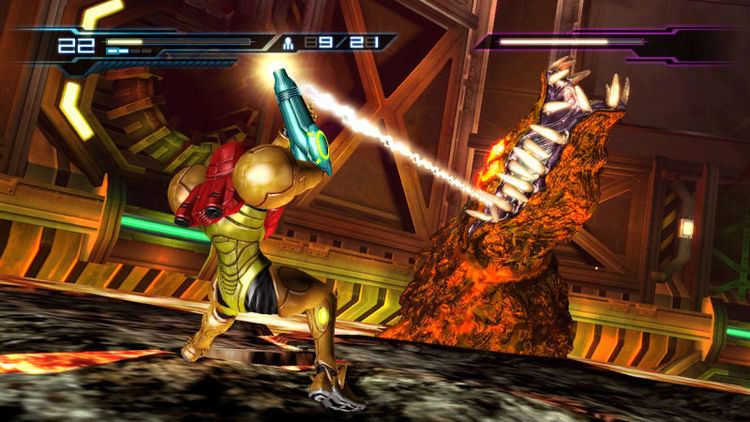 | ||||||||||||||||||||||||||||||||||
Director(s) Yoshio SakamotoYosuke HayashiTakehiko Hosokawa Producer(s) Yoshio SakamotoYosuke Hayashi Artist(s) Takayasu MorisawaYutaka Saito Nominations VGX Award for Best Wii Game Similar Metroid games, Team Ninja games, Action-adventure games | ||||||||||||||||||||||||||||||||||
Cgr undertow metroid other m for nintendo wii video game review
Metroid: Other M is an action-adventure video game developed by "Project M", a team consisting of members from Nintendo, Team Ninja and D-Rockets, and published by Nintendo for the Wii console. It is part of the Metroid series, and was released in North America on August 31, 2010. This was shortly followed by the release in Japan, Australia and Europe in September 2010. The game is set between the events of Super Metroid and Metroid Fusion. The player assumes the role of bounty hunter Samus Aran, who investigates a derelict space station along with a Galactic Federation platoon, which includes her former commanding officer, Adam Malkovich.
Contents
- Cgr undertow metroid other m for nintendo wii video game review
- Metroid other m wii review
- Gameplay
- Setting and characters
- Plot
- Development
- Audio
- Marketing and release
- Technical issues
- Critical reaction
- Sales
- Distinctions
- Appearances in other games
- References
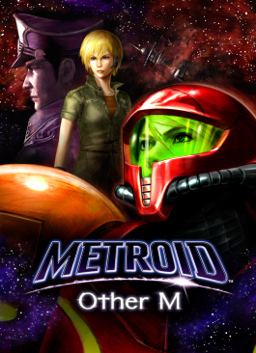
Other M is played from a third-person perspective using only the Wii Remote, and focuses on exploration and combat. The game introduces melee attacks which could only be executed when an enemy's health was reduced to a certain degree. Impressed with the 2004 action game Ninja Gaiden, series co-creator Yoshio Sakamoto approached Team Ninja to develop Other M, while D-Rockets was brought in to handle the in-game cutscenes. The development team employed a simple control scheme to make the game more intuitive and attractive, and gave significant focus on plot and characterization, with extensive usage of cinematics and voice acting.
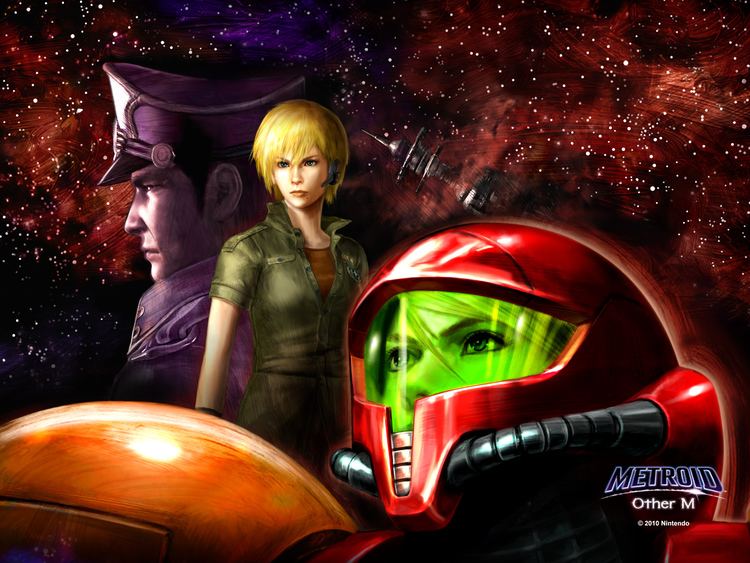
Upon release, Other M received favorable reviews, with much praise to its gameplay, music, graphics and overall atmosphere. Some journalists, however, criticized its plot and Samus' characterization in the game, which was considered negative deviation from the series' norm. The game also received honors and distinctions from several journalistic sites and magazines, including Entertainment Weekly, Game Informer, Wired, GameTrailers, and IGN. Other M was the third best-selling video game in Japan during its week of release, and the ninth best-selling game in North America during September 2010. The game's long-term sales numbers were far below Nintendo's expectations, as a half a million copies were sold in North America by November 2010. Other M was re-released in Japan and Europe on the Wii U's Nintendo eShop in March 2016 and in North America in December 2016.
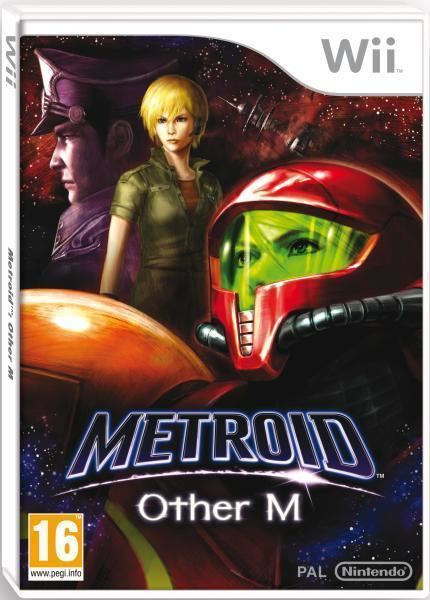
Metroid other m wii review
Gameplay

As in previous Metroid games, Metroid: Other M is set in a large world with elevators that connect regions. Each elevator contains rooms separated by doors, which mostly open automatically, but sometimes need a special action to be unlocked. Other M unfolds in a more linear manner due to its focus on storyline; Navigation Booths, similar to the Navigation Rooms from Metroid Fusion, tell the player where to go, and the in-game map highlights the next objective. The gameplay revolves around solving puzzles to uncover secrets, platform jumping, and shooting enemies. While there are power-ups scattered around the Bottle Ship, a few items are already equipped by Samus, but she agrees to wait to use them until commanding officer Adam Malkovich authorizes her to do so. Unlike other games in the series, enemies do not drop items, with the restoration of health and ammo occurring either by using the Navigation Booths, or employing of the Concentration technique, where Samus rests and replenishes missiles and health.
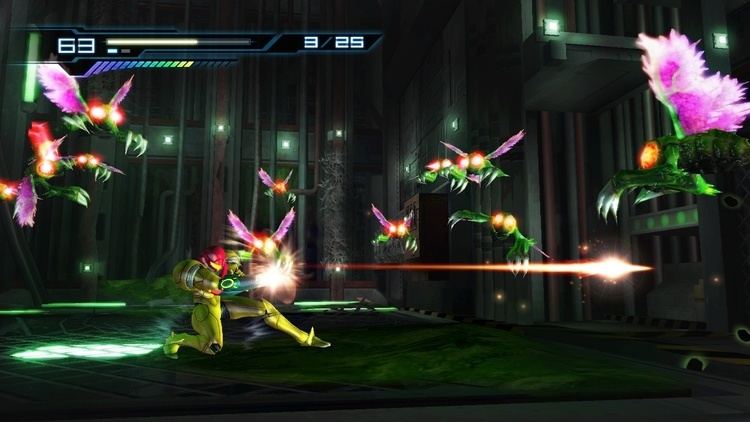
The regular gameplay features a third-person perspective, where players hold the Wii Remote horizontally. Samus can jump, fire the arm cannon, and turn into a morph ball, which can roll into narrow passages and drop energy bombs. While gameplay is similar to early Metroid titles, the game's environments are three-dimensional and movement is not limited to a two-dimensional plane. Other M is the first in the series to feature a melee combat system. With well-timed button presses, players can use special techniques such as the Sense Move, which allows them to dodge enemy attacks, and the Overblast, where Samus jumps on the enemy and fires a charged shot at point-blank range.

When the Wii Remote is pointed towards the screen, the angle switches into a first-person perspective, where players can lock onto targets and fire missiles; however, players cannot move in this perspective. There are several instances where players will have to constantly switch between play modes; for example, fighting off a horde of flying enemies in third person, while switching to first person to destroy their spawn points. Additionally, the first-person mode is also used in exploration, such as locating hidden items.
Setting and characters
Metroid: Other M takes place between Super Metroid and Metroid Fusion, and is set on a Galactic Federation Bottle Ship. The main environment is the vessel interior, known as the Main Sector, along with the other environments that are contained in "sectors" or gigantic spheres within the ship: the Biosphere, a lush, tropical region; the Cryophere, an arctic environment; and the Pyrosphere, a heated, lava-filled area. Later on in the game, the ship is revealed to be a secret facility which contains many different lifeforms with the purpose of turning them into bioweapons. The facility eventually abandoned them after the crew managed to breed a Queen Metroid and propagate Metroids in Sector Zero, a recreation of the Space Pirates' base in Zebes, and interfaced with them via an artificial intelligence in an android body named MB. It is modeled after Mother Brain and is able to communicate with Metroids and other creatures through telepathy.
The player takes on the role of bounty hunter Samus Aran, who investigates the Bottle Ship after receiving a "Baby's Cry"-type distress signal. Upon docking, she encountered the squad she had been a part of when she had been enrolled in the Galactic Federation Army, the "07th Platoon", consisting of several soldiers: Adam Malkovich, the commanding officer to Samus during her time in the Federation; Anthony Higgs, the point man of the 07th Platoon and Samus' past colleague; Lyle Smithsonian, a special forces trooper in charge of demolition assignments and who suffers from entomophobia; K.G. Misawa, the recon scout; Maurice Favreau, the engineer; and James Pierce, a communications expert. Midpoint in the game, Samus learns that the Federation soldiers are mysteriously killed by a secret assassin among their ranks, who she calls the "Deleter". Other characters include Dr. Madeline Bergman, the site manager and development director of the Bottle Ship's secret projects; and MB, named Melissa Bergman, an android created to replicate Mother Brain's artificial intelligence. Adam's deceased brother, Ian Malkovich, is included in one of Samus' flashbacks.
Plot
Samus awakens in a Galactic Federation facility after dreaming about her battle on planet Zebes with Mother Brain and the death of an infant Metroid. After leaving the facility, Samus receives a distress signal from a derelict vessel known as the "Bottle Ship". There, Samus meets the Galactic Federation 07th Platoon, among which her old colleagues from her military career: commanding officer Adam Malkovich, and point man Anthony Higgs. After Samus saves the platoon from monsters, Adam allows her to cooperate with the platoon under the condition that she follow his orders, and assigns the platoon to go on solo searches to investigate the Bottle Ship. Samus and the 07th Platoon heads to the Biosphere's Exam Center, where they learn that the ship's director, Dr. Madeline Bergman, had conducted research on illegal bioweapons for the Federation. After a mysterious reptilian creature attacks before being driven off, Adam directs Samus to follow the monster to the Pyrosphere, but is quickly directed to the Cryosphere in search for survivors. There, Samus encounters a woman in a lab coat, but is attacked by an unidentified 07th Platoon soldier. Realizing there is a traitor amongst the platoon, Samus dubs him the "Deleter".
Samus returns to the Pyrosphere to follow the reptilian creature, and discovers that it is actually a juvenile stage of the dragon-like Ridley. Anthony draws Ridley's attention and challenges him, but is seemingly killed. Unable to save Anthony, Samus battles Ridley, who subsequently escape. As she leaves the Pyrosphere, Samus realizes she cannot contact Adam, and discovers the "Deleter" heading to the Biosphere. Samus follows a traitor to the Bioweapon Research Center, where she meet the woman from before, who introduces herself as "Madeline Bergman." Madeline explains that the scientist were propagating the Metroids in the Bottle Ship, reproduced from the remnants of the infant Metroid found on Samus's power suit after her return from Zebes. Madeline also reveals that MB – an artificial intelligence based on Mother Brain – was created to control the Metroids, harbored in a secret area known as Sector Zero, and that Adam is behind the Metroid military program. Samus heads to Sector Zero, but Adam stops her from entering, warning her that the Metroids in Sector Zero cannot be frozen. Adam commands Samus to defeat Ridley and secure the safety of a survivor in "Room MW" of the Bioweapon Research Center. Adam then heads to Sector Zero to activate its self-destruct sequence, sacrificing himself in the process.
Samus returns to the research center, where she finds a body of James Pierce and a mummified remains of Ridley. She also discovers the survivor, and defeats a Queen Metroid. Samus pursues the survivor, who reveals herself to be the real Madeline. Madeline explains that the woman Samus met eariler was MB, an android created to establish a relationship with the Metroids. Betrayed by scientists and Madeline, MB telepathically commanded the Space Pirate special forces to attack those on board. Samus and Madeline are confronted by MB; as a group of Federation troopers rushes into the room, MB summons the Bottle Ship's most dangerous creatures to attack everyone. Madeline stops MB, who is then killed by Federation troopers. The colonel compliments Samus's efforts but orders a trooper to escort Samus back to her ship; a trooper complies and reveals himself as Anthony, the only surviving member of the 07th Platoon. Samus, Madeline and Anthony leave for the Galactic Federation headquarters in Samus's gunship. Days after the incident, Samus returns to the Bottle Ship, now marked for destruction by the Galactic Federation, to retrieve something that is left there. After battling Phantoon, a monster Samus had also fought on Zebes, she arrives at the control center and recovers Adam's platoon helmet. The Bottle Ship's self-destruct sequence is remotely activated, which an armorless Samus escapes with Adam's helmet.
Development
Metroid: Other M was developed by "Project M", a team of over 100 people that includes staff from Nintendo, Team Ninja, and D-Rockets, with production lasting for three years. During the launch of the Wii console in 2006, Nintendo producer and chief Metroid designer Yoshio Sakamoto decided to create a new Metroid game for it, but opted to work with an outside company, as his usual development team "didn't actually have the know-how to produce something that was 3D". Eventually, Sakamoto approached Yosuke Hayashi of Team Ninja to discuss the incorporation of the flashy Ninja Gaiden engine into a new engine to encompass his new vision of a 3D Metroid game. Sakamoto served as producer and scenario designer, and main design was done by three designers from the Game Boy Advance titles of the series, Metroid Fusion and Metroid: Zero Mission. Team Ninja took charge of the programming and 3D modeling, and D-Rockets handled the CG cutscenes. Hayashi described the work on the game as "a great honour" since he was a fan of the series, and stated Team Ninja tried to include as many creatures seen in previous games as possible.
While Retro Studios tried to create "the ultimate first-person experience" with the Metroid Prime series, Sakamoto's approach with gameplay was different, particularly for the story Other M intended to tell. When Sakamoto met Team Ninja, he said his intent was a game with "controls as simple as those of a NES game", so it would appeal to modern players. Team Ninja agreed with that approach, as they felt control schemes with excessive buttons were possibly turning players off the action genre, and tried to make the game employ only the Wii Remote, without resorting to the Nunchuk expansion. The development team also tried to use the simpler controls to provide flashy action, with varied special attacks that would need few button inputs to be executed. Sakamoto focused on 2D-like gameplay because he considered it more "comfortable" for audiences, particularly during shifts from gameplay to cutscenes, as he thought 2D "[doesn't] have the same distractions when you want to give them story sequences". While the developers felt no need to integrate everything from the Prime series as they were games with different concepts, a few of the elements that "made those games unique" were implemented into Other M, such as the "immersive sight" of the first-person mode. When questioned if Other M would be too similar to Ninja Gaiden, Yosuke Hayashi responded that while the new game will feature heavy action-based sequences, there will still be the exploration-based sequences characteristic of other Metroid games. Yoshio Sakamoto said that Other M's story progression was in the same manner as Metroid Fusion, and stated that the collaboration between Nintendo and Team Ninja is "unlike anything that's ever been done at Nintendo; it's more than just a collaborative effort — it's one group working toward a common goal".
Before Other M's development, Sakamoto did not think too much about "what kind of person Samus Aran was and how she thinks and her personality", particularly because the games tried to depict Samus as a mysterious person. Sakamoto and Team Ninja put much focus on backstory in the game to present Samus as an "appealing human character", something important for future installments, as players would get further interest in Samus' adventures. Hayashi said that one of the development team's goals was to have the player "connect with Samus as the story and action develops". Sakamoto also said the game would "bring everyone up to the same level of understanding in the Metroid universe", and would not only introduce the series to new players but also create new challenges for fans. The chronological setting between Super Metroid and Metroid Fusion was chosen because Sakamoto considered the period "so critical that without addressing it, we wouldn't be able to make new games that show Samus' adventures that take place after the events of Metroid Fusion".
D-Rockets, a company specialized in CG animation for video games and commercials, was brought into the project for its in-game cinematics on Team Ninja productions. Director Ryuji Kitaura said when Nintendo gave him the instructions, he considered the work "overwhelming" - most of D-Rockets work only involved high-quality CG, while Nintendo aimed to "make the parts of the game that the player controls the same quality as the cinematics, in order to make them seamless" and Sakamoto intended to cutscenes to give emotional depth to Samus. Team Ninja and D-Rockets worked separately most of the time, and only started to collaborate about a year into production, to make sure the in-game action and the cutscenes had the same style. Over 300 storyboards which took six months to be completed, and ten teams were employed on the development of cutscenes. For increased realism, professional camera operators helped with the motion capture, and Samus' face had a more detailed frame to make expressions more lifelike. Kitaura tried to include more scenes with Samus outside her powered armor, to illustrate "the human, weak side of Samus, her expressions and gesture", but Sakamoto convinced him otherwise with a declaration that the Power Suit acts as a shield for both enemy attacks and the reveal of her emotions. As a special feature, players can unlock "Theater Mode", a two-hour film presentation, upon completion of the game. Divided into chapters, this film contains every cut-scene of the game, along with several clips of gameplay footage recorded by the developers. Other M uses a dual-layer disc due to extensive usage of cinematics in the game.
Audio
Kuniaki Haishima composed the soundtrack of Other M. The team hired Haishima to write the music because the producers felt he could "tell the story with melodies" and "powerfully [helped] us depict Samus' feelings and emotions". Parts of the soundtrack were recorded and performed by Arigat-Orchestra in Tokyo and Asian Philharmonic Orchestra in Beijing. Furthermore, a "piece of piano music" was made by a member of staff at Sakamoto's request.
For the game's voice acting, Jessica Martin was cast to play Samus in the English version of Other M, and said that recording sessions took over a year which resulted in the voice cast being required to record lines with storyboards and unfinished cutscenes as basis. Adam Malkovich was voiced by Dave Elvin; while Mike McGillicuty provided the voice of Anthony Higgs. In Japanese, voice actors Ai Kobayashi, Rikiya Koyama, Kenji Nomura and Shizuka Itō provided the voices of Samus, Adam, Anthony and MB respectively. Seattle-based Bad Animals Studio and Ginza-based Onkio Haus recorded voice-overs in English and Japanese languages respectively.
Marketing and release
The game was first announced by Nintendo of America president and CEO Reggie Fils-Aimé and a trailer was briefly shown during the Electronic Entertainment Expo 2009. Fils-Aime stated that Metroid: Other M would "take you deeper into Samus' story", and also noted that the game would be a return to the style of the traditional series as opposed to the Metroid Prime series, though the game would have a "harder edge". On E3 2010, the game had a playable demo, which GameTrailers picked as Best Wii Game and Action/Adventure Game of the expo, and was nominated for Game of the Show. Previews of Other M were also featured in the 2010 editions of Game Developers Conference and Nintendo Media Summit. Fils-Aime expected global sales of between 1.5 and 2 million units.
Metroid: Other M was released in North America on August 31, 2010. It had an original release date of June 27, 2010, but it was postponed by two months, as the high standards of the development team got them behind the completion schedule. In other territories, Other M was released September 2 in Japan and Australia, and one day later in Europe, where its release was preceded by a large marketing campaign with television spots, trailers at theaters, and online ads. GameStop began providing an art folio for purchasers who pre-ordered the game containing "16 individual high-quality cards". The cards feature concept artwork, in-game screenshots, and a description from Samus' perspective. Metroid: Other M was later re-released on the Wii U's Nintendo eShop, in Japan on March 17, 2016, in Europe on March 31, and in North America on December 8.
Technical issues
After the release of Metroid: Other M, it was reported to have a bug where the door in Sector 3 is permanently locked and impassable, preventing players from continuing. Nintendo revealed that a bug is triggered when the player backtracks to the room within Sector 3 where they have previously obtained the Ice Beam. The company has set up a program that allows players affected by the bug to send in an SD card or their Wii console with their save files to be repaired.
As Other M utilizes a dual-layer disc, Nintendo has stated that some Wii consoles may have difficulty reading the high-density software due to a contaminated laser lens. Nintendo offered a free repair for owners who experienced this issue.
Critical reaction
Metroid: Other M was met with "generally favorable" reviews, according to Metacritic. GameSpot's Tom McShea praised the control scheme and combat system as "unique and responsive", and wrote that the search for secrets was "very rewarding". IGN called the gameplay "a really impressive evolution of the old-school Metroid design", and GameTrailers described it as "a nice compromise between satisfying fans and opening up the series for a wider audience". In a review for an Australian television series Good Game, Stephanie Bendixsen enjoyed the game's atmosphere, while Steven O'Donnell remarked on how the developers "kept [the control scheme] so simple, and yet it works so well." The writers from Famitsu also praised the game for the Sense Move technique and the switch between perspectives. The graphics were also well-received. Christian Donlan of Eurogamer exclaimed that Other M bears graphical similarities to Metroid Prime which "tend to come across as nicely-built video game levels at best". IGN claimed that while the graphics are not being on par with the Prime series, it was still regarded as one of the best-looking games on the Wii. The Daily Telegraph described the environments as "lush and detailed", and said they helped "capturing the ethos of old-school Metroid". IGN also praised the game's "storytelling with motion-captured acting and voice-over", and Wired applauded cutscenes "with slick graphic effects". The music was praised as atmospheric and faithful to the franchise, though GameSpot felt they were "more like outtakes from older entries than a moody new soundtrack".
Complaints were raised on the first person perspective, with Ryan Scott of GameSpy considered it a "weird forced handicap". Phil Kollar of Game Informer expressed disappointment that the game prevents the player from moving while in first person view. The The A.V. Club's David Wolinsky found the pixel hunting sequences irritating, while Official Nintendo Magazine's Chris Scullion similarly described them as the "only truly horrible moments" in the game. Critics responded poorly to the mechanic of power-up restriction; they derided it as a deviation from the series' tradition of item discovery, and even more strongly criticized it as nonsensical and condescending in terms of story. GamesRadar derided the game's linearity in comparison with Metroid Fusion, a game which took a similar approach. The website also found the enemies to be "a largely unimpressive collection", a gripe which Edge also had; it wrote that "truly testing enemies are only found in the last stretch". Other M's short length was criticized by reviewers, by critics such as GameTrailers, which writes that the bonuses such as art galleries were not stimulating enough to entice replay value.
Major criticism focused on the script, dialogue, and cutscene length. GameSpot felt that the unskippable cutscenes and "the overabundance of story in Other M were a negative deviation from Metroid tradition". Kollar states that they "often run as long as 15 minutes, exhausting players with repetition of obvious plot points and overwrought dialogue as mature and interesting as a teenager’s diary". 1UP.com complained that as the game progresses "instead of getting more of the things that work [combat], you get more of the things you don't care about [overwrought story]". Donlan added that the plot is considered "the future's dumbest soap opera". Wolinsky echoes the misgivings about Samus' immaturity, petulant behavior, and misguided loyalty. Tae K. Kim of GamePro writes that while the story and Samus' monologues did not compel them, "it helped contextualize her entire existence" which developed the character to "an actual human being who's using the vastness of space to try and put some distance between herself and the past". Contrarily, Justin Haywald of 1UP.com found the portrayal "lifeless and boring" and "nonsensical". G4tv's Abbie Heppe considered Samus's portrayal "sexist"; she wrote that she "cannot possibly wield the amount of power she possesses unless directed to by a man", and found that her anxiety attack cannot be reconciled with her previous portrayals. Ben Croshaw of Zero Punctuation was critical on the game's story, calling it a "bloated, cancerous mass [...] turning one of gaming's toughest female icons into a shrieking mimsy in a submissive relationship with a bellend in a fancy cap". He also described the gameplay as "infinitely stronger [than the story] in that it's merely bad."
In a feature for 1UP Presents magazine, Jeremy Parish states that many Metroid fans were disappointed by the game's story, power-up restrictions and its "awkward handling of its leading lady". Video game scholar Luke Arnott argued that players were dissatisfied with Other M because it did not consistently balance gameplay constraints with player agency, and because it failed at what he calls “imperative” storytelling. Arnott suggested that studying how games like Other M create meaning in virtual spaces may help design better games and situate them within wider theories of postmodern subjectivity. Clyde Mandelin of Legends of Localization noted that the game received mixed-to-positive reactions from Japanese fans. Kotaku's Luke Plunkett wrote that Team Ninja was blamed by "many people" for the game's story; Hayashi later clarified that Sakamoto wrote the story himself. Nintendo Treehouse producer Nate Bihldorff stated that the scene depicting Samus' encounter with Ridley "is not a sign of weakness, but of strength. People who call out that scene as anything but empowering are kind of missing the point". He added that Samus' story "has largely been a matter of individual perception, especially in the US, where people haven't read any of the official manga related to her childhood."
Sales
Metroid: Other M was the third best-selling video game in Japan during its week of release with 45,398 copies sold, ranking it behind Wii Party and Monster Hunter Diary: Poka Poka Airu Village. An additional 11,239 copies were sold the following week. It was also the ninth best-selling game in North America during September 2010, with 173,000 copies sold. In the United Kingdom, the game failed to make the top 10 and placed 12th in its first week. In November 2010, Fils-Aime stated that the game is "getting close to half a million" copies sold in the United States, far below Nintendo's expectations.
Distinctions
Other M received honors and distinctions from various gaming sites and publications. In IGN's Best of 2010 Awards, the game received the award for Coolest Atmosphere. It was also nominated for Best Story award, but lost to Epic Mickey. IGN also gave the game an Editor's Choice award. GameTrailers nominated Other M for Best Wii Game of 2010; however, it ultimately lost to Super Mario Galaxy 2, while Wired listed it 12th on its list of the twenty best games of the year. On the other hand, X-Play chose Other M as Game That Gave Us The Biggest Headache; they wrote that it was a "morass of bad decisions", from the controls to Samus' portrayal. Another G4 program, Attack of the Show!, named Other M one of the worst games of the year. Entertainment Weekly chose the game as the second worst of 2010.
GamesRadar chose Other M as the Mangled Makeover of 2010; they wrote that it painted Samus, widely considered a strong female lead character, as "an unsure, insecure woman who desperately wants the approval of her former (male) commanding officer". GameTrailers additionally nominated the game for the Most Disappointing Game of 2010. Game Informer listed Samus first on their list of the Top 10 Dorks of 2010 due to her "lame backstory", and placed Other M third on their Top 10 Disappointments of 2010 list, ranking behind "studio closures, layoffs, [and] restructurings" and the "Infinity Ward debacle".
Appearances in other games
Since its release, elements of Metroid: Other M have appeared in other games. The Geothermal Power Plant is featured as a playable stage in Dead or Alive: Dimensions, a fighting game developed for the Nintendo 3DS by Team Ninja. The stage features Ridley as a stage hazard, while Samus appears as an assist character in the Morph Ball form, who will drop a Power Bomb that switches the combatants' location when a sound is made in the microphone. Yosuke Hayashi confirmed that Samus would not be featured as a playable character in Dead or Alive: Dimensions, stating that "it would be better to let her focus on her job rather than kicking everyone's butt in [Dead or Alive: Dimensions]." The Pyrosphere also appears as a stage in Super Smash Bros. for Wii U, an entry in the Super Smash Bros. series.
